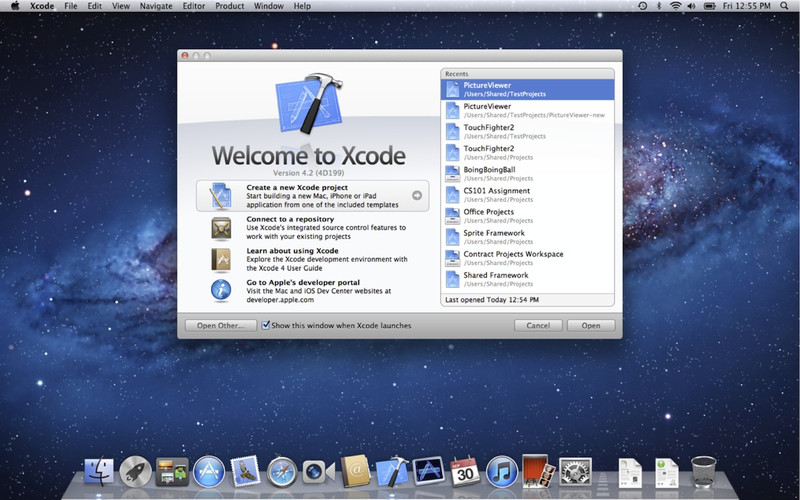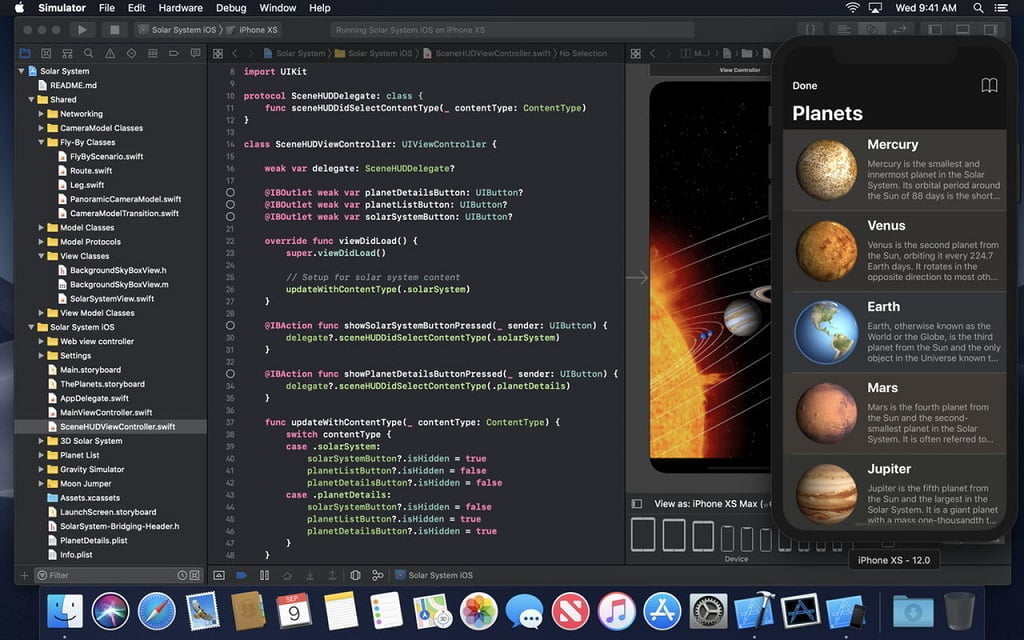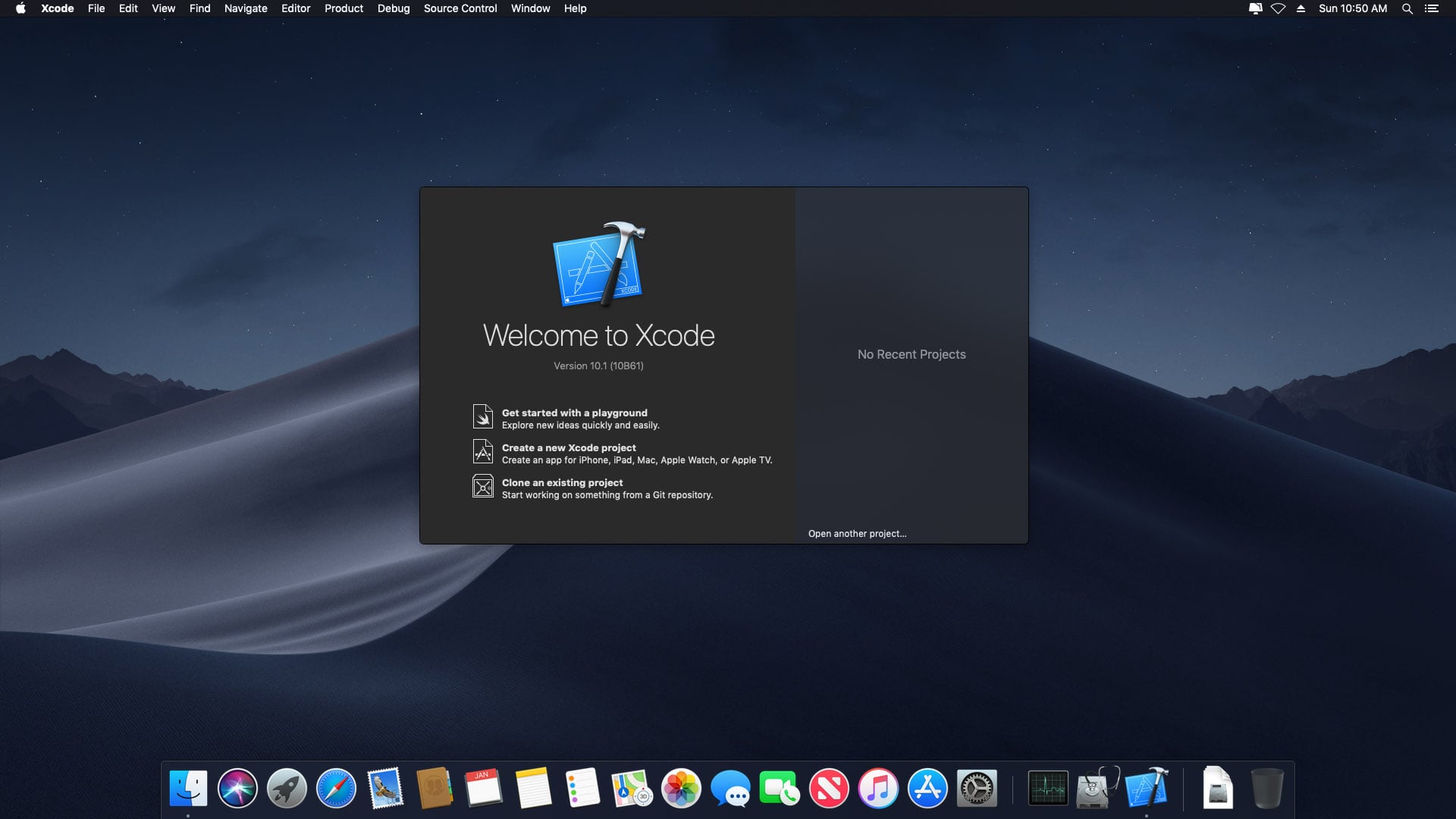

- #Xcode for mac os x how to#
- #Xcode for mac os x install#
- #Xcode for mac os x code#
- #Xcode for mac os x plus#
- #Xcode for mac os x download#
#Xcode for mac os x install#
Then, in order to start developing SFML applications, you have to install the following items:
#Xcode for mac os x download#
Please refer to Apple's documentation about Xcode 3 andįirst of all you need to download the SFML SDK which is available on the download page. A guide on doing that is beyond the scope of this tutorial. If you are still using this version of the IDE and you don't consider updating it, youĬan still create SFML applications. You can select which modules your application requires, whether you want to use SFML as dylib or as frameworks and whether toĬreate an application bundle containing all its resources (making the installation process of your applications as easy as a simple drag-and-drop) or a classic binary.īe aware that these templates are not compatible with Xcode 3. SFML is provided with two templates for Xcode 4+ which allow you to create new application projects very quickly and easily: On the download page are only available in the release configuration. In either case, it shouldn't be an issue since you should be using the release version of SFML when you release your application anyway. However, frameworks are only available in the release configuration. If you build SFML yourself, you can get dylib in both release and debug configurations. There is only one slight difference between these two kinds of libraries that you should be aware of while developing SFML applications: You can find more details inįrameworks are fundamentally the same as dylibs, except that they can encapsulate external resources. You have the dylib libraries on the one hand and the framework bundles on the other.ĭylib stands for dynamic library this format is like. SFML is available in two formats on macOS. If you can't find the CLT there use xcode-select -install in a Terminal and follow on-screen instructions. With recent versions of Xcode you also need to install the Command Line Tools from Xcode > Preferences > Downloads > Components.

Xcode (versions 4 or above of the IDE, which is available on the App Store, are supported).A 64-bit Intel Mac with Lion or later (10.7+).They are meant for further reading on specific topics for those who are curious reading them isn't necessary to follow this tutorial.Īll you need to create an SFML application is: You will see several external links in this document.
#Xcode for mac os x how to#
More importantly, it will also show you how to make your applications ready "out of the box" for the end users. To install SFML, set up your IDE and compile a basic SFML program. With its solid functionality, multiple panes, and shared source code, there is no need to look at any alternatives when choosing an app development tool.This is the first tutorial you should read if you're using SFML with Xcode - and more generally if you are developing applications for macOS. You can run Xcode on OS X 10.8 Mountain Lion or iOS 7 and above.

The changes will take effect across both platforms.
#Xcode for mac os x code#
For ease of use, source and project code can be shared by Mac and iPad, allowing you to convert existing iPad apps into Mac apps. If your users have slow networks or run in extreme heat, you can test those conditions out before releasing your app.

Use the devices window to simulate other environments. You can view your design changes instantly in another window. For developers who prefer multiple editing panes, Xcode provides you with total control of your work area. The drag and drop function helps you to make changes to visual UI elements, quickly and easily. Interface builder allows you to switch between light and dark modes, or even view them side by side. Newly introduced dark mode is built into Xcode.
#Xcode for mac os x plus#
This added plus can identify errors in syntax and logic, and often fix the code for you. Updated functionality now lets you code, test and debug all inside one window. Easy to read and write, Swift UI will help keep your apps smaller and download faster by using less code. Xcode featuresSwift UI, which offers up its own syntax. MacOS or iOS developers need look no further than the Xcode developer tool to design great apps. Design great apps on either Mac, iPad, or iPhone using Xcode.


 0 kommentar(er)
0 kommentar(er)
